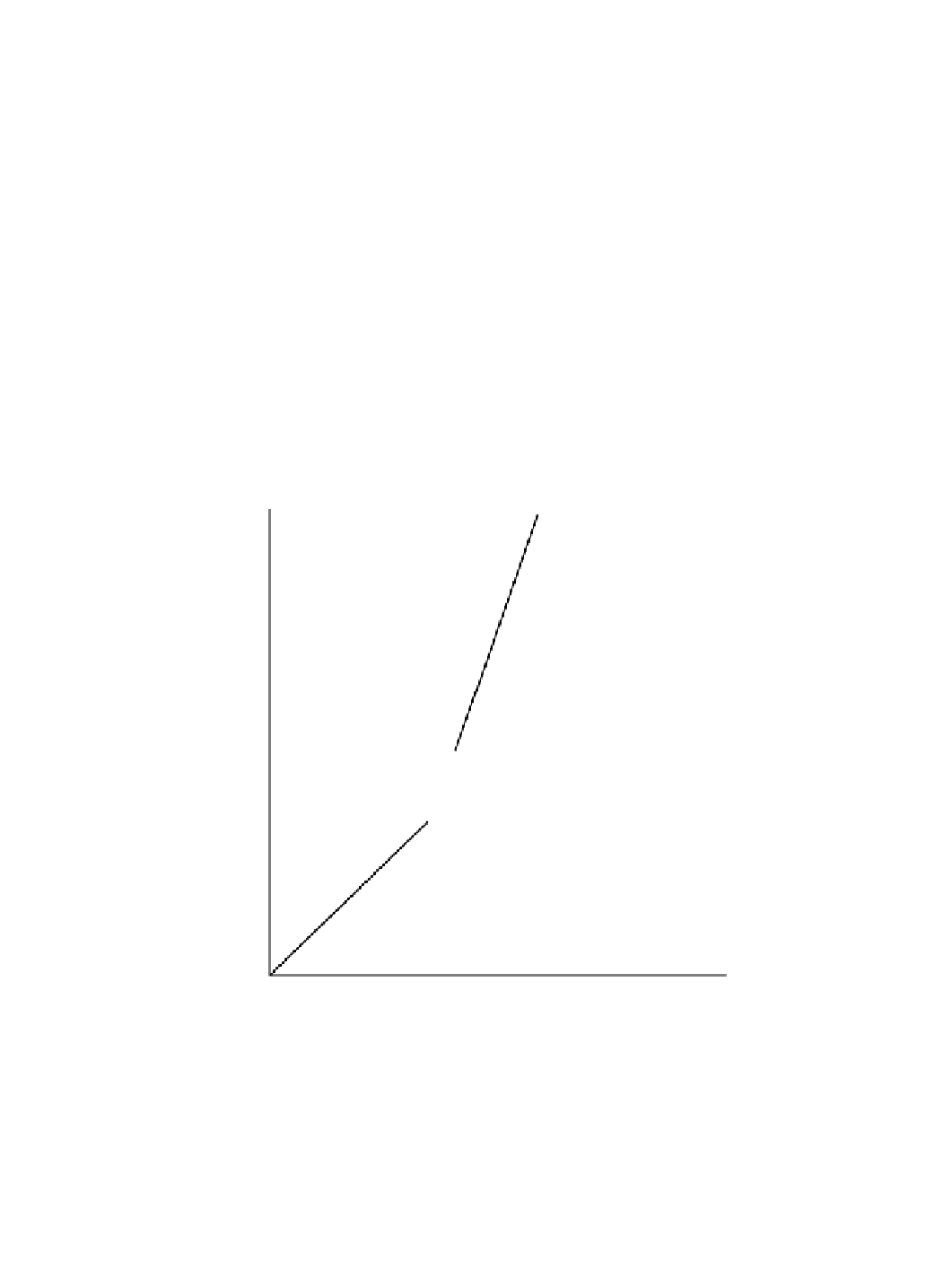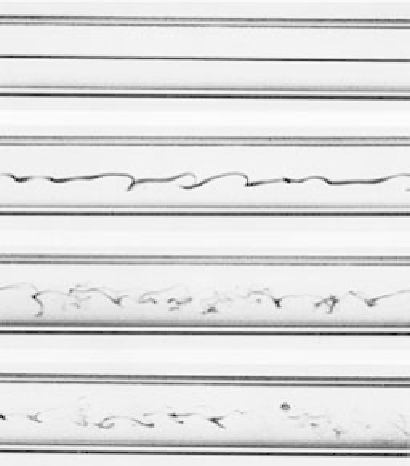Geoscience Reference
In-Depth Information
carefully introducing a dye streak into a steady flow of water
through a transparent tube (Figs 4.7 and 4.8). At low flow
velocities the dye streak extended down the tube as a
straight line. This was his “direct” flow, what we nowadays
call laminar flow. With increased velocity the dye streak was
dispersed in eddies, eventually coloring the whole flow.
This was Reynolds' “sinuous” motion, now known as tur-
bulent flow. It was Reynolds' great contribution, first, to
recognize the fundamental difference in the two flow types
and, second, to investigate the dynamic significance of
these. The latter process was not completed until he pub-
lished another landmark paper in 1895 on turbulent
stresses (see Section 3.11); more on these in Section 4.5.
1
2
4.2.1 Energy loss and flow type: Reynolds critical
experiments
Concerning the forces involved, it was previously known
that “The resistance is generally proportional to the square
of the velocity, and when this is not the case it takes a sim-
pler form and is proportional to the velocity
.”
Reynolds
approached the force problem both theoretically
(or “philosophically” as he put it) and practically, in best
physical tradition. His philosophical analysis was “that the
general character of the motion of fluids in contact with
solid surfaces depends on the relation between a physical
constant of the fluid, and the product of the linear dimen-
sions of the space occupied by the fluid, and the velocity.”
Designing the apparatus reproduced in Fig.
3
4
Fig. 4.8
Photographic records of laminar to turbulent transition in a
pipe flow.
4.6, he
Turbulent
flow
1.75
1
Transition
zone
Laminar
flow
flow
1
1
∆
p
Mean flow velocity of water
Fig. 4.9
The rate of pressure decrease downflow increases in a linear fashion until at some critical velocity, the rate of loss markedly increases as
about the 1.8 power of velocity.








Search WWH ::

Custom Search